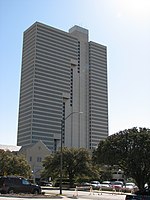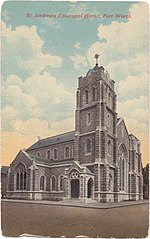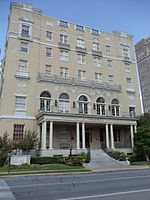Fort Worth Masonic Temple
1932 establishments in TexasBuildings and structures in Fort Worth, TexasMasonic buildings completed in 1932Masonic buildings in TexasNational Register of Historic Places in Fort Worth, Texas ... and 2 more
National Register of Historic Places in Tarrant County, TexasRecorded Texas Historic Landmarks

The Fort Worth Masonic Temple is a Masonic Temple located at 1100 Henderson Street, Fort Worth, Texas. Designed by Wiley G. Clarkson, the Neoclassical/early PWA Art Moderne structure was completed in 1931 and has largely remained unchanged. The building was listed on the National Register of Historic Places in 2017 as Masonic Temple.
Excerpt from the Wikipedia article Fort Worth Masonic Temple (License: CC BY-SA 3.0, Authors, Images).Fort Worth Masonic Temple
Henderson Street, Fort Worth
Geographical coordinates (GPS) Address Nearby Places Show on map
Geographical coordinates (GPS)
| Latitude | Longitude |
|---|---|
| N 32.747222222222 ° | E -97.338333333333 ° |
Address
Henderson Street 1150
76196 Fort Worth
Texas, United States
Open on Google Maps









